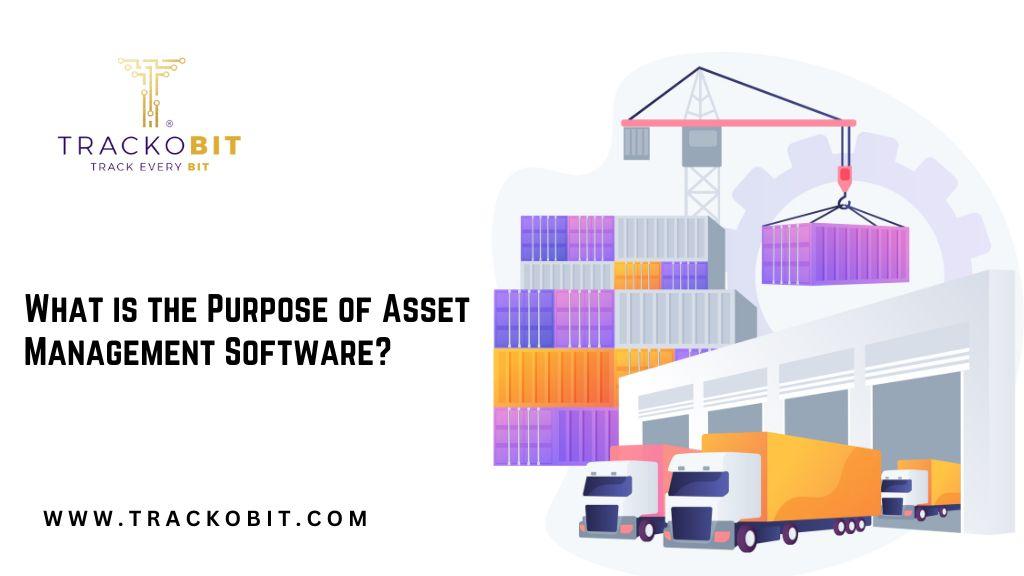The entire life cycle of an asset, from purchase to disposal, is tracked and recorded using a specialised system known as asset management software. It provides an organisation with details on where specific assets are located, who is using them, how they are being used, and other relevant information.
Ensuring the safe transportation of assets, such as your personnel, cargo, fleet, or anything else, is essential. This article explains the operation of asset management software. Moreover, how they as a part of comprehensive route planning solutions help keep tabs on assets on the go with effective route planning.
What is Asset Management Software?
Asset management software is a specialised tool to track, manage, and optimise mobile or immobile assets of the organisaton. Assets can involve any equipment, resources, vehicles, or even workforce.
Read Blog: What Is Asset Tracking? Importance, Benefits & How It Works
Why Asset Management Systems are Important?
Asset management software is designed to help monitor, manage, and optimise processes starting from asset deployment to safe transfer. Let’s review in detail what’s the actual purpose of the asset management system.
-
Real-time Asset Location Tracking
Asset management software helps track the real-time locational movements of any assets, equipment, or consignment in transit. Asset trackers with GPS vehicle tracking technology mounted around the assets of choice shoot the real-time locational coordinates to the asset tracking software. It helps ascertain where the assets are headed in real time or when they are entering or leaving the designated areas.
-
Ensuring Asset Safety
The likelihood of an asset or consignment in transit getting lost or misplaced is very high. A fleet full of high-value goods is prone to asset theft. Since there is a significant time and distance between the goods traveling from point A (where they were loaded) to point B (where they are unloaded, client-side), risks are even greater.
The asset management system provides minute-by-minute visibility of the asset-carrying fleet. The best part it even triggers alarms when the asset is suspected in danger. Fleet managers get alerts even if the fleet is found deviating from the assigned route. When added with video telematics solutions, they help provide video surveillance of in and out of the asset-carrying fleet.
-
Improving Process Efficiencies
Asset monitoring solutions help streamline the process of tracking, management, optimisation of workflow. The software keeps the delivery party well-informed about the consignment and fleet whereabouts, current locations, and estimated time of arrival. This helps remove chaos and mismanagement from the process. When added with a fuel management system, the asset managers are able to track and stay aware of the fuel levels throughout the transit and stay assured about safe and timely arrivals.
-
Data-Driven Reports
The software helps automate data collection and sorting and generates visualised reports for better decision-making. It provides asset managers complete visibility into variables defining assets’ current location, performance, and ROI.
They also get access to distance travelled reports with a playback option. This particular report shows the entire trip history to tap into inefficiencies along the way. It helps asset owners identify the most efficient routes to save fuel spends and time on the road.
Additional Benefits of Using an Asset Management System
-
Asset Status and Condition Monitoring
The software makes it easy to schedule and track routine maintenance tasks. Which further helps ensure asset visibility, safety, and shelf life. The asset managers receive maintenance alerts, service dates, and any unusual changes in the asset’s status.
-
Check-in/Check-out
The software makes it easy to monitor who is responsible for an asset at any given time and its status. For instance, the availability, the use, under repair, and all other necessary details.
-
Integration and Data Import/Export
The software is easy to connect with pre-existing accounting and inventory management systems that enable swift data sharing. Managers can easily import existing asset data and export reports in various formats, be it CSV, or PDF.
Read Blog: Why is Asset Management Software Important?
-
Reporting and Analytics
The software takes away the hassle of creating manual reports and files. The system automatically generates reports. At one click, managers get quick access to insightful reports detailing:
-
Asset utilisation and idling.
-
Maintenance costs, and other key metrics.
-
A-glance views of asset performance and current status through visual dashboards.
-
User Access and Security
It makes it easy to establish distinct user roles with different levels of authorization and access. That means no more unauthorised data access.
-
Mobile Accessibility
Best part? It enables asset management while on the go by providing access to asset information and performing updates via mobile applications.
-
Scalability
When the quantity of assets and users in your organisation grows, the software is able to grow with it. No matter how many assets are added, tracking and monitoring them without any latency won’t be an issue.
-
Alerts and Reminders
Since asset managers are often occupied with day-to-day events, for them, notifications and reminders are everything. The software helps receive timely notifications for important events, like asset at halts, idling, upcoming maintenance tasks, danger levels, and more.
How Does Asset Management Software Work?
The asset management system comprises 4 parts mainly – hardware such as GPS devices or asset trackers, asset tracking software, cloud server, and IoT devices (wherein you will receive the reports).
GPS-Powered Asset Monitoring Hardware or Trackers
GPS trackers are compact, high-capacity devices that transmit data through cellular networks or satellites. These movable GPS tracking units may be hardwired into large consignments or asset-carrying equipment. But since some devices are wireless, you can also pack them in your luggage.
Cloud Server
A network-hosted cloud server is a centrally located server that is used and shared amongst various users. The server is where raw and real-time locational data is stored for each asset.
Asset Management Software
Asset management software compiles all raw data from the servers and lays it over a simplified interface of asset management software. Thanks to this system, managers won’t have to divulge in heavy hard or paper copies or any manual spreadsheets to record and monitor any sort of data or intel.
The software helps keep a tab of all the asset’s locational data under one hood.
Your Devices
The asset tracking software further moves the data to mobile phones, laptops, and tablets. It helps generate insightful reports over analytical dashboards that provide clear visibility of the asset’s current location and operational specifics.
Conclusion
Asset tracking is a critical tool that helps organisations keep a tight hold on their most valuable assets, which might include a fleet of cars, sophisticated machinery, or even digital assets. The difficult task of tracking, maintaining, and optimising assets over their lifetime is made easier by this software.
It uses a combination of cloud servers, tracking software, hardware, and the device of your choice to function flawlessly.
For an asset management system, TrackoBit is a great option because it automates asset tracking, maintenance, scalability, and reporting analytics. It has every feature listed above plus more.
Set up a demo right now!
Source: What is the Purpose of Asset Management Software?



